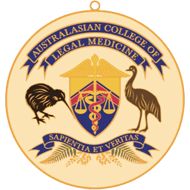Osteonecrosis of the Jaw and Biphosphonates
Osteonecrosis of the jaw is a serious but rare complication of bisphosphonate and Prolia treatment for osteoporosis. It is diagnosed when maxillary or mandibular bone becomes exposed whilst medicated with bisphosphonates. The bisphosphonates are a group of drugs which are preferentially incorporated into sites of active bone re-modelling where they inhibit hydroxyapatite breakdown, thereby effectively suppressing bone resorption.
Just how bisphosphonates cause osteonecrosis is not well understood but it is probably due to a combination of decreased bone remodelling, poor wound healing, and an antiangiogenic effect leading to ischaemic changes and subsequent necrosis in response to a local traumatic insult.
The reason that dentists are apprehensive about working on patients taking biphos phonates is that invasive dental treatments such as tooth extraction, dental implant, or apical/periodontal surgery are defini tive local risk factors for ONJ. Tooth extraction is considered as the intervention most responsible for ONJ, ranging from 69% to 86% of cases .The risk is increased 8-fold in medicated dental patients.
What bisphosphonates carry the greatest risk?
- Pamidronate (Aredia®) and zoledronic acid (Zometa®)
- Intravenous bisphosphonates carry a higher risk of ONJ.
What is the ONJ risk with Prolia™(= denosumab) ?
In one study by Everts-Graber et al, 2021),the incidence of osteonecrosis of the jaw was 4.5 per 10,000 patient years for bisphosphonate therapy and 28.3 per 10,000 patient-years for denosumab (=Prolia) therapy . At least 2 other antiangiogenic monoclonal antibodies used in oncology can cause ONJ: Bevacizumab (Avastin®) and Sunitinib (Sutent®).
In this study more than half of the adults with osteonecrosis of the jaw had relevant risk factors such as smoking, glucocorticoid therapy and type 2 diabetes, rheumatoid arthritis and two were receiving aromatase inhibitors for breast cancer treatment.
The half-life of denosumab is 26 days, whereas that of bisphosphonates (BP) varies between 10-12 years.
What predisposing factors increase the risk?
Pre-existing dental or periodontal infection in patients treated with antiresorptive or antiangiogenic medications is a well-recognized risk factor for developing ONJ. This is mediated through increased acidity which inhibits wound healing .The jaw is a site of predilection because of the high concentration of bacteria in the oral cavity.
Biphosphonate /Denosumab treatment for osteoporosis
Osteoporosis is a systemic skeletal disease that increases with age and is common among post menopausal women .Osteoporosis decreases bone resistance to low-energy trauma and increases bone fragility and fracture risk.
Approximately 11% of women aged 60-69 years and 26% of women aged > 70- years will be affected. Hip and spine fractures are associated with particularly high morbidity and mortality in this population .Approximately one third of elderly patients die within 12 months of a fractured femur.
How long should bisphosphonate treatment continue? Mostly 3 to 5 years
A systematic review showed that after three to five years of bisphosphonate therapy, bisphosphonate continuation compared with discontinuation reduced the risk of radiographic (zoledronic acid) and clinical (alendronate) vertebral fracture, but it did not reduce nonvertebral fracture (Fink et al,2019) .Long term use of bisphosphonates is associated with an increased risk of atypical fractures of the femur.
(similar to stress fractures).
How long should you treat with Prolia? Possibly 3 years
In one large study comparing Prolia™ with placebo 3 years of treatment with Prolia™ reduced the risk of vertebral fracture by 68% and hip fractures by 40% and other fractures by 20%.
Examples of bisphosphonates:
- Alendronate (Binosto®, Fosamax)®
- Ibandronate (Boniva®)
- Risedronate (Actonel®, Atelvia®)
- Zoledronic acid (Reclast®, Zometa®)
Prolia-:mechanism of action
Prolia is a monoclonal antibody which binds to a cytokine called RANKL It prevents bone resorption by inactivating osteoclast maturation, function and survival.
Investigations for possible osteonecrosis of the jaw.
Imaging investigations include panoramic or plain film imaging, computerized tomography assessing cortical and cancellous architecture with lower radiation exposure, magnetic resonance imaging, bone scanning, and positron emission tomography, Magnetic resonance imaging (MRI) is now considered the gold standard of diagnosis as it is highly specific (>99 %) and sensitive for the earliest stages of osteonecrosis.
- Drake MT, Clarke BL, Khosla S. Bisphosphonates: mechanism of action and role in clinical practice. Mayo Clin Proc. 2008 Sep;83(9):1032-45. doi: 10.4065/83.9.1032. PMID: 18775204; PMCID: PMC2667901.
- Song M. Dental care for patients taking antiresorptive drugs: a literature review. Restor Dent Endod. 2019 Nov 1;44(4):e42. doi: 10.5395/rde.2019.44.e42. PMID: 31799170; PMCID: PMC6875544.
- Fink HA, MacDonald R, Forte ML, et al. Long-Term Drug Therapy and Drug Discontinuations and Holidays for Osteopo rosis Fracture Prevention: A Systematic Review. Ann Intern Med 2019; 171:37.
- Everts-Graber J, et al. J Bone Miner Res. 2021;doi:10.1002/jbmr.4472.
) Author:Dr Mike O'Connor
Author:Dr Mike O'Connor| Tags:Other |








